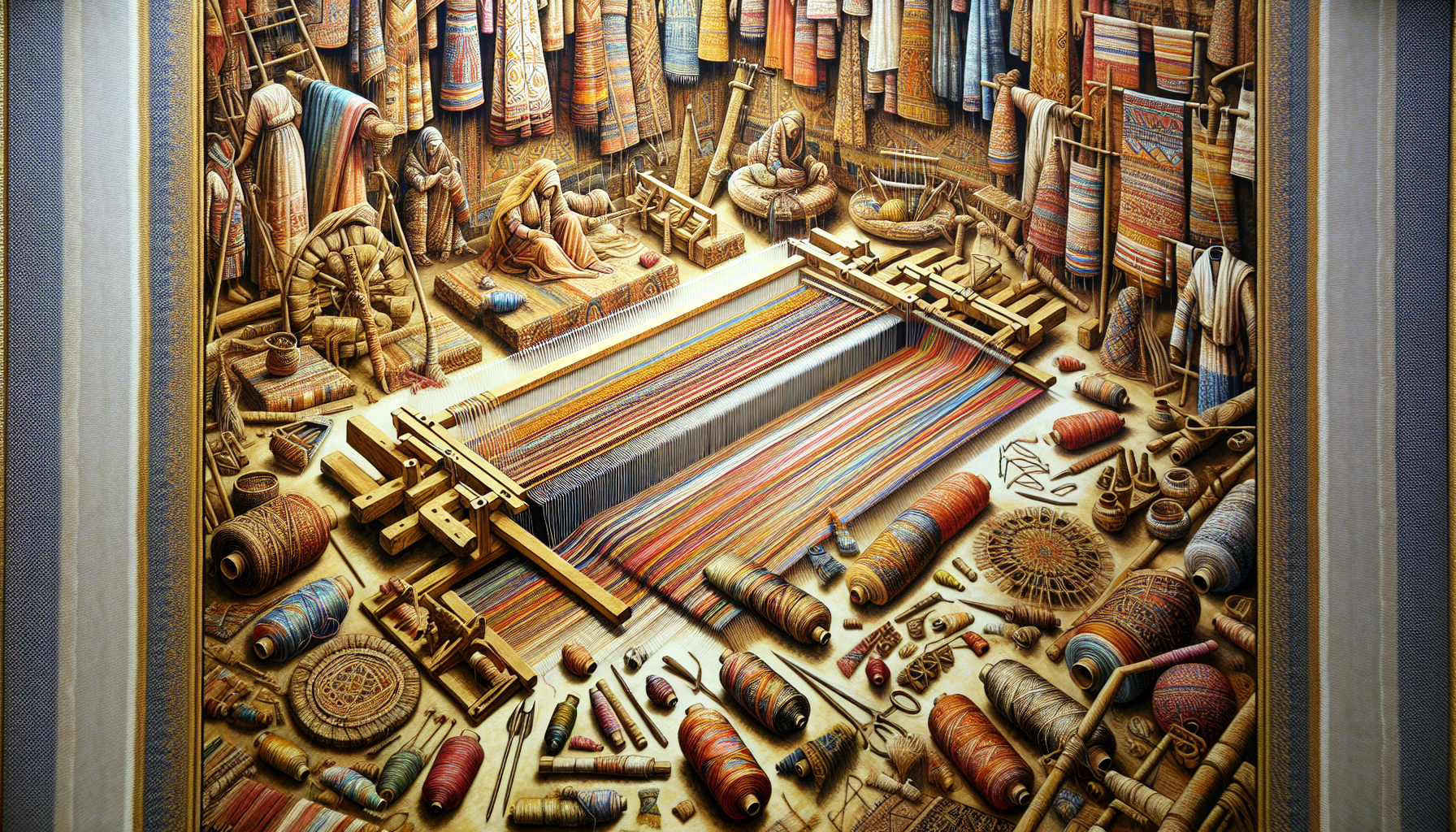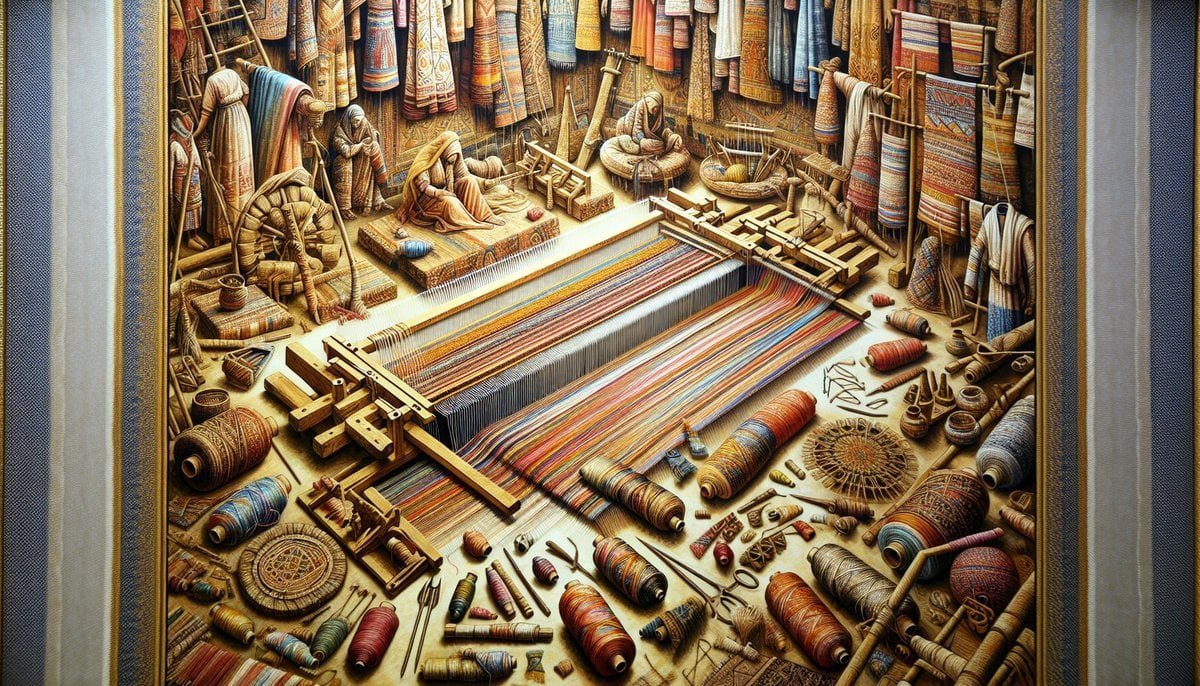Uncovering Ancient Textile Production Through Biblical Archaeology takes readers on a captivating journey into the fascinating field of biblical archaeology, shedding light on the intricate process of textile production in ancient times. By examining various archaeological discoveries and analyzing the clues left behind, the article explores how biblical archaeology provides valuable insights into the ancient techniques, materials, and cultural significance of textile production. From the construction of looms to the dyeing and weaving processes, this article uncovers a treasure trove of knowledge about the ancient world through the lens of textile production.
The Importance of Biblical Archaeology
Biblical archaeology plays a crucial role in understanding and preserving ancient history. Through excavations and analysis of artifacts, biblical archaeologists uncover valuable insights into the world of biblical times. This field of study not only sheds light on the events and cultures described in the Bible but also provides a deeper understanding of ancient societies and their practices. In particular, the investigation of ancient textile production has been a significant focus of biblical archaeology, revealing the importance of textiles in daily life, the symbolism associated with different fabrics, and even the trade and commerce that revolved around textiles.
Textiles in Ancient Societies
Textiles held great significance in ancient societies, serving multiple purposes beyond just providing clothing. They were more than mere fabrics; they were a reflection of social status and cultural practices. Textiles were intricately woven into the fabric of daily life, used for clothing, household items, and even religious rituals. They were symbols of wealth, craftsmanship, and cultural identity. The study of ancient textiles allows us to explore the various fabrics used, their symbolic meanings, and the societal structures that led to their creation and use.

Archaeological Techniques and Methods
To uncover the secrets of ancient textile production, archaeologists employ various techniques and methods. Excavating ancient textile production centers provides valuable insights into the tools, techniques, and materials used in textile production. Artifacts, such as looms and textile fragments, are carefully analyzed to understand the intricacies of ancient weaving and dyeing methods. Comparative studies with other ancient cultures further enhance our understanding of textile production techniques and trade practices.
Excavated Sites and Discoveries
Various archaeological sites have yielded important discoveries related to ancient textile production. Tel Megiddo, an ancient city in Israel, stands out as a rich textile production center. Excavations at this site have unearthed evidence of spinning, weaving, and dyeing activities, providing valuable insights into the techniques and materials used in textile production during biblical times. Another significant site is Masada, a fortress on a mountaintop overlooking the Dead Sea. Excavations at Masada have revealed ancient looms, showcasing the importance of textile production in this remote desert location. Additionally, Qumran, known for its connection to the Dead Sea Scrolls, has provided valuable contextual information about textile production and its connection to religious practices.

Tools and Techniques of Ancient Textile Production
Ancient textile production involved a variety of tools and techniques that required great skill and craftsmanship. Spinning and weaving tools, such as spindles and looms, were used to transform raw materials into fabric. Dyeing and coloration methods allowed for the creation of vibrant textiles, with natural dyes derived from plants, insects, and minerals. Pattern development and design were important aspects of textile production, with artisans employing various techniques, such as embroidery and tapestry weaving, to create intricate and visually appealing patterns.
Types of Ancient Textiles
Ancient societies produced a wide range of textiles, each with its own distinctive properties and uses. Linens and woolens were commonly used for clothing, providing comfort and protection from the elements. Silk, a luxury fabric, was highly prized for its softness and delicate sheen, often adorned with embroidery. Additionally, tapestries and rugs were woven with intricate designs, not only for decorative purposes but also to provide insulation and showcase the craftsmanship of the weavers.
Trade and Commerce in Ancient Textiles
Textiles played a significant role in ancient trade and commerce, with regions specializing in the production of certain types of fabrics. The Silk Road, an extensive network of trade routes connecting Asia, Europe, and Africa, facilitated the exchange of textiles and other goods, fostering cultural and economic interactions between different civilizations. Regional specialization in textile production led to the development of unique styles and designs, which were highly sought after in the ancient world. The textile trade had a profound economic impact, driving local economies and shaping societies.
Textiles in Biblical Narratives
The Bible itself contains numerous references to textiles, offering insights into their significance in biblical times. In the Old Testament, specific fabrics are mentioned in relation to sacred rituals and priestly garments, highlighting their religious symbolism and the importance given to them in worship. Textiles were also used to denote social and cultural distinctions, as seen in narratives depicting individuals of high status adorned in fine garments. The New Testament continues this tradition, with textile references used to convey messages of faith, righteousness, and spiritual growth.
Preservation and Conservation Challenges
Preserving ancient textiles presents unique challenges due to environmental factors and decay. Fabrics can deteriorate over time, making it essential to employ conservation techniques to ensure their longevity. Factors such as temperature, humidity, and exposure to light can accelerate the degradation process. Preservation efforts include storing textiles in controlled environments and utilizing specialized techniques for cleaning, stabilizing, and repairing fragile fabrics. In recent years, digital preservation and virtual reconstruction have emerged as innovative approaches to document and conserve ancient textiles.
The Legacy of Ancient Textile Production
The legacy of ancient textile production extends far beyond the ancient world. It has influenced modern textile techniques, inspiring designers and artisans to experiment with traditional weaving methods and patterns. Understanding historical clothing and fashion is made possible through the study of ancient textiles, as these fabrics provide glimpses into the sartorial choices and social norms of past civilizations. Moreover, preserving cultural heritage is an essential aspect of the study of ancient textiles, as it allows us to honor and appreciate the craftsmanship and traditions of our ancestors.
In conclusion, biblical archaeology has been instrumental in uncovering the secrets of ancient textile production. Through excavations, analysis of artifacts, and comparative studies, we gain a deeper understanding of the significance of textiles in ancient societies. From their everyday use to their role in religious rituals, textiles played an integral part in the lives of people during biblical times. The study of ancient textiles not only enriches our knowledge of the past but also influences modern textile techniques and helps preserve our cultural heritage.






